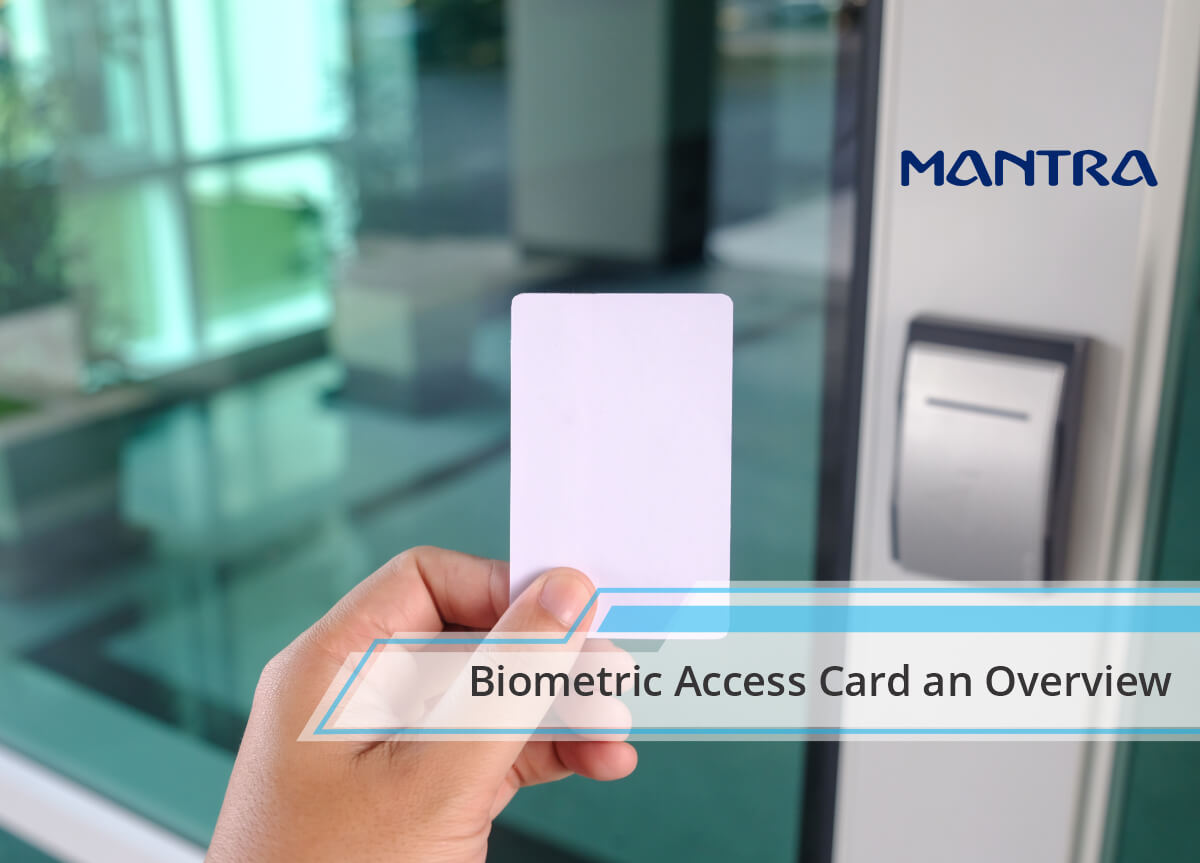
In recent years, organizations across the world are moving toward biometric-contactless access control devices. While contactless biometrics is gaining momentum, a large proportion of companies are still unable to make the shift. The main reason is the cost and infrastructure requirement of replacing the RFID readers with biometric readers.
The Biometric access card is the solution to upgrade the existing RFID identification system without replacing the RFID reader. Instead of replacing the readers, the RFID tags are replaced with biometric access cards. Let's check how.
Biometric access card: How it works
The biometric access card is a combination of RFID and fingerprint scanning technology. The RFID ID tags provided for each will be embedded with a fingerprint scanner on them. While the RFID system communicates with the reader, the fingerprint scanner will authenticate the cardholder. Hence, while enrolling an employee, his/her's fingerprint must be registered on the card. The fingerprint template will be stored in the card's chip and will vary with the sensor each time the cardholder attempts to authenticate at the access control device.
The new biometric system will work in the same way as the current RFID system. The only difference is that cardholders must scan their fingerprints on the ID's fingerprint sensor while using it. The card will transfer the credential required to get access from the reader only if the fingerprint matches the template.
The working principle of biometric access cards is similar to biometric payment cards. The RFID card will activate itself when it is in the electromagnetic field of the RFID reader. Both the chip and the fingerprint sensor are powered by the energy received from the electromagnetic field. The correct fingerprint authentication of fingerprint triggers the transfer of data to the RFID reader and grants access.
Security of biometrics in access cards
The fingerprint template inside the card will never leave the card. The fingerprint biometrics is only required to grant permission to transfer your credential from the card to the reader. That means the card will not transfer the biometric data under any circumstance. However, the smart card must have both physical and logical security measures. This contains Faraday cage implementation, light detection, assault detection, scrambled memory addressing, and so on. The card must adhere to the ISO 15683 standard.
Benefits of biometric access cards
No more buddy punching:- Biometric enables accurate identification of the cardholder. Nobody else can punch the card for an employee or misuse it.
Secure:- The fingerprint of the cardholder will be safe inside the card. There is no chance for biometric data to get transferred even with the reader device.
Go contactless:- The access card enables the organization to go contactless without changing any existing infrastructure. also without the need for additional server space or a cloud facility.
Flexibility:- At any time, the data recorded on the smart card can be altered or suspended. Furthermore, the system can combine PIN authentication with biometrics to increase security. This might pave the way to adopt more advanced biometric algorithms in the future.
Conclusion
The most straightforward approach to convert an access card-based system to a biometric access control system is to switch to a biometric access card. Even though it is not a comprehensive biometric solution with fingerprint and facial recognition modalities as in bionic devices, it can meet the requirements for contactless tap-and-go access control.
Abhishek Sawant
I went through the blog and found it very informative and thorough.
Reply